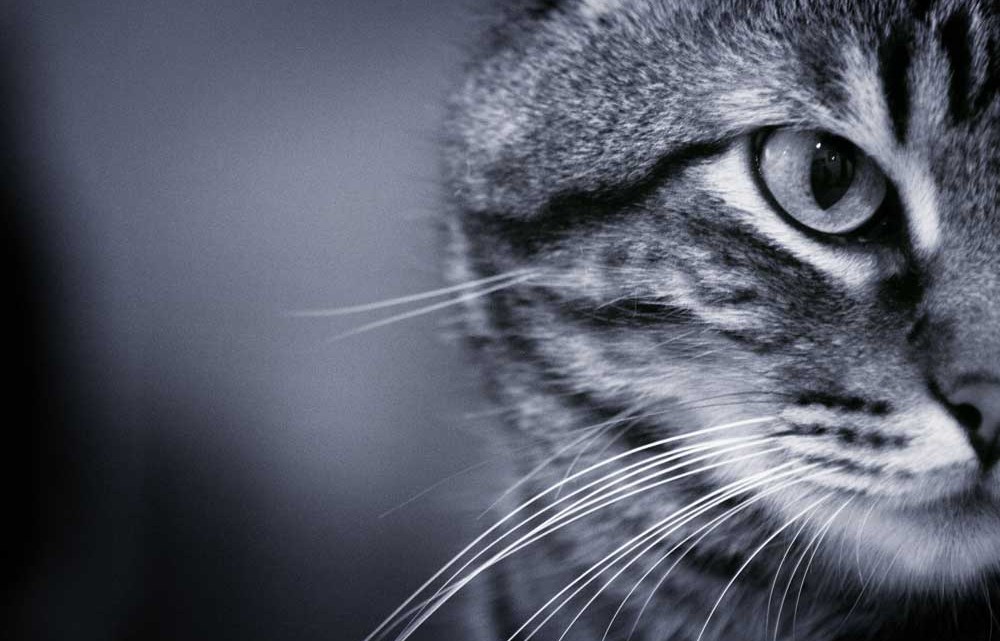Malignant breast tumors are common in felines. Here’s what you need to know about mammary or breast cancer.
Mammary or breast cancer is the third most common cancer in cats. Malignant lumps in the breast of a cat usually start out feeling like small, hard, dried peas. Any lumps you find in your cat’s breast area are a red flag that it’s time for a trip to the veterinarian.
As in humans, female cats get breast cancer much more often than males. Cats have eight mammary glands, and the most commonly affected are the inguinal glands at the bottom. Siamese are more likely to get mammary cancer than other breeds, and they tend to develop it earlier, at an average age of nine years. Other cats tend to develop it when they are around 14.
Breast cancer spreads rapidly
In cats, 90% of breast lumps are malignant. They spread rapidly to the nearest lymph nodes and the next breast in the mammary chain, usually on the same side. It usually spreads up or down from there to the rest of the glands, although it occasionally moves over to the other side. Lymph nodes are present up and down the mammary chain.
Left untreated, the first tumor will get bigger and eventually break through the skin. These tumors usually outgrow their blood supply fairly rapidly, so there will be some dead tissue in them. Infection sets in and the tumor becomes smelly and full of pus. At the same time, the tumor is spreading, first to the lymph nodes, and then to the chest, brain, bone and spleen. In the chest, the tumor will take up space so there is less room for the lungs. Eventually, the patient will have a hard time breathing.
Surgery is often recommended
When you visit your veterinarian, he or she will probably recommend blood tests, x-ray studies, surgery and a biopsy. The x-rays will show any cancer that might already be in the chest, as well as whether or not the spleen is enlarged. A kitty with a chest or spleen full of tumors has a much shorter lifespan and will have a harder time in surgery.
Doing surgery early in the disease process is important for survival time. Cats with tumors removed when they are less than about ¼” in diameter live an average of four-and-a-half more years. Surgery done when the tumor is more than 1¼” in diameter means a survival rate of six months or less.
Surgery can be local or involve all the mammary glands on one side. If there is just one small lump in a breast, especially if that breast is at one end of the chain of glands, then surgery to remove just the one breast can be considered. If the tumor is larger, all the breasts on one side are usually removed, along with the lymph nodes. If the cancer has already spread to the chest, then surgery is not going to help, unless it’s palliative surgery done to relieve the pain and discomfort from tumors that have broken through the skin and become infected. It will make the cat feel better, but will not make a difference in survival.
There are some who believe that surgery just spreads the cancer. While this may happen with a tumor that is loosely put together, a feline mammary tumor is tightly packed, and the entire breast is removed. The tumor spreads through the lymph system, so some cancer cells may be released locally when lymph vessels are cut, but if there are already cancer cells there, then the cancer is already spreading via the lymph system. Early surgery does make a difference.
Biopsies determine tumor type
When surgery is done, it is wise to also have a biopsy done. Although the tumor will likely turn out to be malignant, there are four main tissue types of mammary cancer, and each can be graded from I to III. By knowing the type and grade, a veterinarian can determine how long the cat may live after surgery, and how soon the tumor will come back.
Prevent with early spaying
The best way to prevent breast cancer in female cats is early spaying. Having kittens has no effect at all on the incidence of this cancer, so spaying before the first heat is the best time to prevent mammary cancer.
- Spayed before the age of six months = 91% less risk of developing breast cancer than intact cats
- Spayed before the age of one year = 86% less risk
- Spayed between one and two years old = 11% less risk
- Spayed after two years old = no reduced risk
Mammary cancer is serious, but early spaying can help prevent it, while early detection means a better prognosis.







No Comment